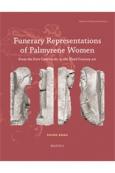 |
||
|
|
||
Compte rendu par Leonardo Gregoratti, Durham University Nombre de mots : 904 mots Publié en ligne le 2020-03-09 Citation: Histara les comptes rendus (ISSN 2100-0700). Lien: http://histara.sorbonne.fr/cr.php?cr=3613 Lien pour commander ce livre
This book is the first significant monographic work that presents and discusses the results of the Palmyra Portrait Project (PPP), the research project headed by Professor Rubina Raja and funded by the Carlsberg Foundation. The Project aims at collecting and cataloguing more than 2000 Palmyrene portraits scattered through museums and private collections all around the world. Since 2011 and much more so in recent years, when the political situation forced the scholars’ community to interrupt their work in the field, the activities and the numerous initiatives connected to the Project have become a reference point for all scholars dealing with Near Eastern subjects in general and Palmyra in particular.
The primary outcome of the Project is the creation of a corpus of Palmyrene portraits complete with all the information relative to each piece, including the Aramaic, and sometimes Greek, inscriptions. Therefore, this much-needed database constitutes a fundamental tool not only for art historians but also for all scholars working on Palmyra and the Near East. As Krag’s volume shows, it can be used as a starting point for a new approach to research on Palmyrene topics, an approach characterised by statistical considerations and conclusions now based on comprehensive data.
In Krag’s volume, all the portraits of women, from funerary loculi, funerary reliefs and sarcophagi statuary groups are collected. They are presented and more relevantly, contextualised and discussed. The actual catalogue, the last section of the book, constitutes, of course, the core of the work, and at the same time provides the bulk of data for an exhaustive and detailed analysis of the pieces. The portraits are thus considered within their funerary context in this way providing an accurate presentation of Palmyrene funerary habits and Palmyrene society, in particular concerning women’s roles. Palmyrene burial practice is presented with its historical development through various typologies of tombs. Paragraphs are dedicated to the tombs' inscriptions, the materials employed and the organisation of the space within the tombs. The funerary portraits themselves are analysed though the chronological phases or groups, individuated by Ingholt and College on the base of the artistic variations in the rendering of faces, upper bodies and clothes and in the choice of attributes. For each type of portrait, loculi busts, reliefs and sarcophagi groups, the artistic solutions are analysed as well as the changes, which occur through the different phases. Elements such as the movement of the body, hand gestures, colour, different clothes, rendering of the body are taken into consideration and discussed referring to the statistical data made available by the catalogue.
Jewellery and headgear among the peculiar elements of the funerary representations are the most evident markers of Palmyrene female identity and deserved a specific chapter. Chronological variations concerning these features are discussed as well as their social meaning and the methods employed by the artist to render them. From the research on aspects more directly related to the history of art and archaeology, the author moves on to discuss the role of the women in Palmyrene society. The analysis is mainly based on the epigraphic texts. Women appear in religious ceremonies; they dedicate honorific statues or are themselves honoured. They appear as benefactors for temples or the construction of public buildings. The increasing role of women in Palmyrene society during the 3rd century AD is proved by the significant number of cession texts involving women. In these texts, the owner of a large tomb or part of it conceded the use of some spaces to people not belonging or related to the family that originally built it. In a few cases, a woman is the only heir of the founding family. More impressive is the increasing numbers of dedications of altars to the "anonymous god" by women or involving women from 3rd Century AD Palmyra.
The increasing role of women is proved in the contemporary funeral portraits by the accentuated relevance reserved to female figures in the group compositions and by the more detailed and elaborated rendering of jewels and headgear in the individual representations.
Both the artistic and epigraphic evidence analysed in parallel, seem to point towards the acquisition of a recognised and more active social and religious role of the women in Palmyrene society in comparison with the previous centuries. This fact must be understood, of course, within limits and restrictions imposed by a substantially patriarchal society, where the role of women always remained secondary.
The most interesting part of the monograph is of course the complete catalogue of the Palmyrene female funerary portraits. These pieces along with the information connected with them not only constitute the most important source in order to study the role of women in Palmyra, but they also provide the first comprehensive overview of the artistic representation of women in the Palmyrene world. The catalogue, its contextualization and the accurate analysis of the pieces indubitably lay the foundations upon which future scholars will build their own research. The monograph therefore will be extremely useful for art historians, in particular those interested in the contamination of Classical art at the border of the Greco-Roman world, but also and more relevantly, for all scholars dealing with gender studies problems. Any study concerning the role of women in Ancient Near Eastern Societies and their representation should take into account Krag’s study.
|
||
|
Éditeurs : Lorenz E. Baumer, Université de Genève ; Jan Blanc, Université de Genève ; Christian Heck, Université Lille III ; François Queyrel, École pratique des Hautes Études, Paris |
||
